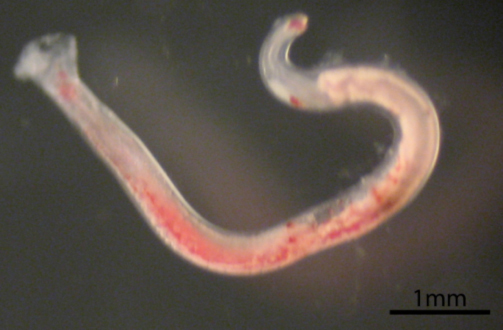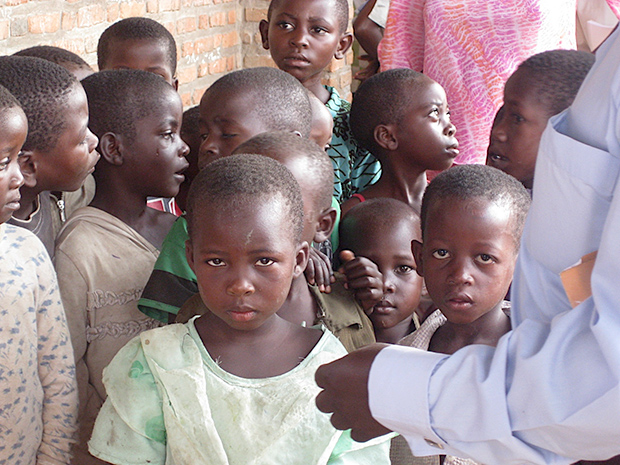By:
- Kim McDonald
Published Date
By:
- Kim McDonald
Share This:
Innovative Approach to Treating Intestinal Roundworms Holds Hope for Millions of Infected Children in Undeveloped Regions

Photo by Yan Hu, UC San Diego
For billions of people, mostly in poor, undeveloped regions, intestinal roundworms are a debilitating fact of life. These parasites, which include hookworms and whipworms, infect four million children, causing stunted growth, poor mental development and malnutrition. They also have a major impact on the health of pregnant women and other adults.
Delivering or developing expensive anti-roundworm treatments to billions of people in the Third World isn’t a practical solution. But an innovative idea by a UC San Diego biologist to develop strains of bacteria that possess a crystalline protein toxic to intestinal roundworms that can be easily eaten in yogurt and soybean dishes could offer hope. His team of biologists and his collaborators were awarded this month with a two-year $1 million grant from the Bill and Melinda Gates Foundation to conduct further research on the biology of this approach that could eventually lead to a way to treat those afflicted with roundworms.
“Some people estimate two billion people are infected with these parasites worldwide,” said Raffi Aroian, a professor of biology who heads the research effort. “That's one and a half times the combined populations of North America, Europe and Russia.”

Scientists treat children in Burundi infected with roundworms. Photo by Jeanine Niyonzima-Aroian
Aroian and his team discovered several years ago that a protein from a soil bacterium related to those used to kill insects naturally on organic crops was a highly effective treatment for intestinal parasitic roundworms in experimental animals. “We can infect hamsters with human hookworms and we can cure them,” Aroian said. “This crystal protein, known as Cry5B, is produced by the Bt, or Bacillus thuringiensis bacterium, which is sprayed on crops by organic farmers to kill a variety of insects, including the tobacco hornworm.”
In a preliminary research effort funded by the Gates Foundation two years ago, Aroian found that a genetically similar bacterium Bacillus subtilis natto, used by Japanese to ferment soybeans in a popular dish called natto, can also produce a biologically active form of the Cry5B protein. He and his colleagues—who include Joseph Pogliano, an associate professor of biology at UC San Diego, Todd Klaenhammer of North Carolina State University, Gita Shankar of SRI International and Joseph Urban of the U.S. Department of Agriculture—now want to find out if this bacterium and other bacterial species that ferment milk into yogurt can be modified into bacterial food products that can be fed to the developing world to treat and prevent intestinal roundworms. The bacteria could be dried and put into packages like yeast, Aroian said, then delivered to Third World countries, where they could be added to food and drink.
“Vaccines haven’t proven successful to date and the worms themselves hamper vaccination. You need a treatment that can be deployed to billions of people in harsh conditions,” said Aroian. “As someone I met recently who travels to all parts of the world recently told me, ‘there are a lot of problems in the developing world that need to be solved, but this one is near the top of the list.’ If you want to help poor children and the rest of the people who are affected in the developing world, this is an important step.”
Share This:
Stay in the Know
Keep up with all the latest from UC San Diego. Subscribe to the newsletter today.



